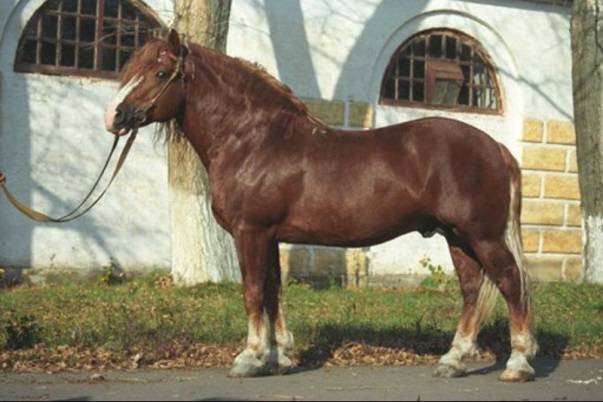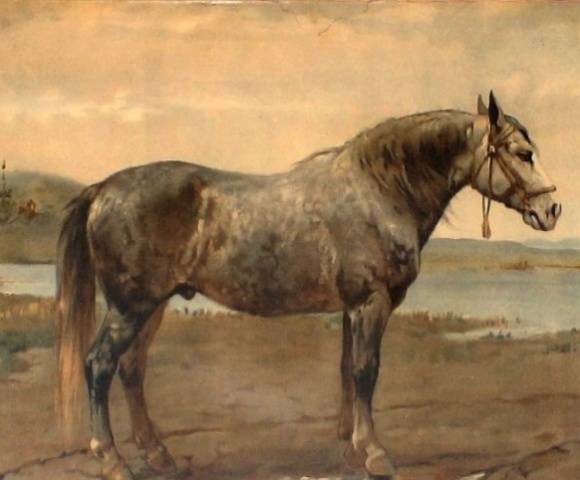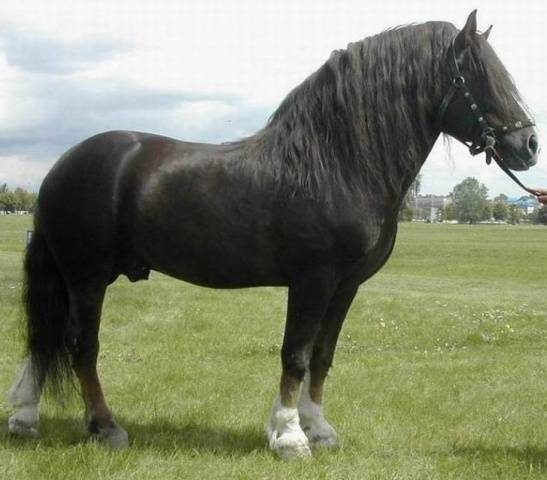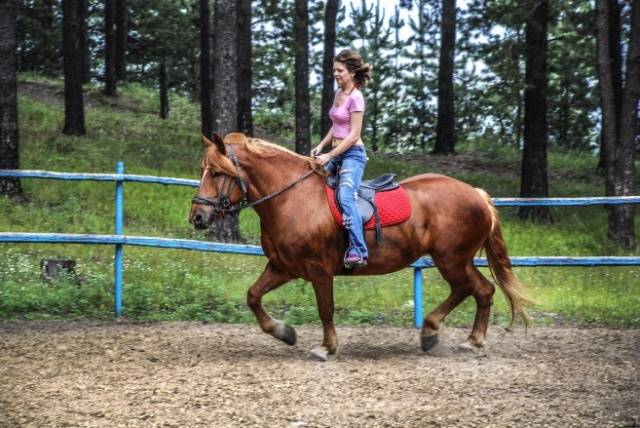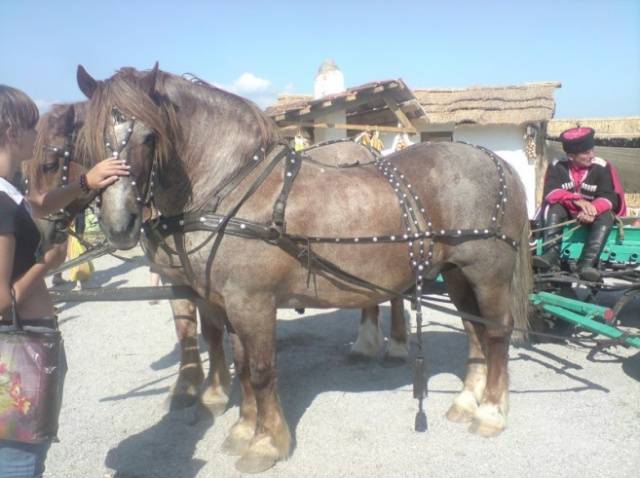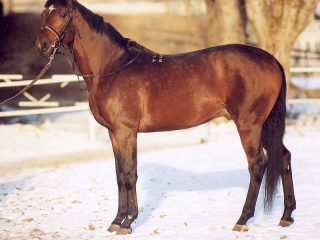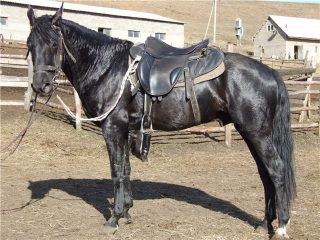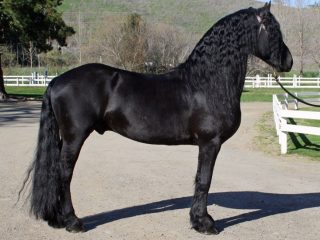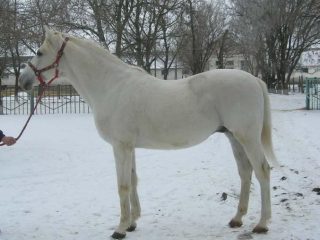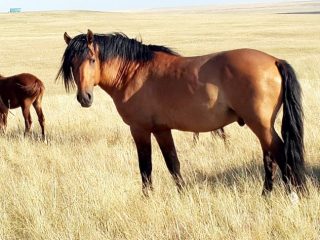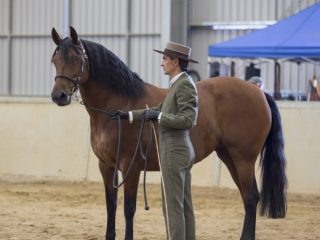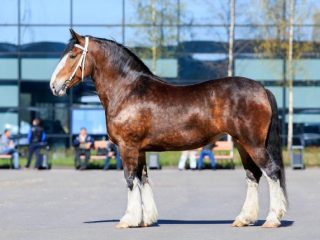Content
The Russian draft horse is the first Russian breed that was originally created as a draft horse, and not from the “it just so happened” series. Before heavy trucks, there were draft horses, which at that time were called “draft horses.” These were large and quite massive animals, closer to the universal type. This was the Kuznetsk horse bred in the 18th century.
But the strong working horse, bred on the basis of the indigenous stock of Western Siberia, did not fully meet the requirements for heavy-duty breeds. This was the reason for its disappearance due to mixing with Western heavy trucks imported in the 19th century.
Story
The formation of the Russian heavy truck was carried out in the European part of the Russian Empire. It began in the second half of the 19th century, when Belgian all-purpose horses began to arrive in Russia. These horses got their name from the name of the area in which they were bred. The region is called the Ardennes and is located on the border of Belgium and France.
Ardennes began to be systematically bred at the plant at the Petrovskaya (Timiryazevskaya) Agricultural Academy. The Ardennes were very unpretentious and agile, but had many exterior flaws. Around the same time, other breeds of draft horses from Europe began to be actively imported to Russia.
After Peter's Agricultural Academy, Ardennes breeding plants were organized in Little Russia and on the southeastern border of the empire. In Little Russia, in order to improve the exterior characteristics of the Ardennes horses, they began to cross them with local mares, also infusing the blood of Brabançons and Oryol trotters. In a painting from 1898, a Russian Draft horse shows a significant amount of Oryol blood.
Then these horses were not yet called Russian heavy trucks. Moreover, today any specialist will confidently say that the picture shows a cross between an Oryol trotter and some kind of heavy draft breed. And not very successful: short but thin neck; the legs are too thin for the massive body; The croup is rather weak for a heavy truck with insufficiently developed muscles. This is what was inherited from the Oryol Trotter, a light-harness, high-speed breed. But the large chest and straight shoulder blade indicate the walking Ardennes breed of heavy draft horses.
In 1900, the breed of heavy trucks bred in the Russian Empire was first presented at the Paris Exhibition. The development of the new heavy breed was hampered by the First World War and the subsequent Great October Revolution and Civil War. These adversities practically destroyed the nascent Russian draft horse. In 1924, only 92 stallions were found. Although future Russian heavy trucks were luckier. Only 6 heads remained of the Streletskaya breed, of which only 2 were stallions.
By 1937, the stock was restored and work on the breed continued. Factories were founded in Ukraine and on the southern border of the RSFSR, where the selection of the future Russian heavy truck was carried out. But the Russian heavy truck was officially registered as a breed only in 1952.
But the resulting horse was not very tall. Its average size was about 152 cm. Since the need for large draft horses in the south began to decline, the small height at the withers even turned out to be an advantage. In terms of the cost/economic return ratio, the characteristics of the Russian heavy truck breed are above average.
Thanks to its qualities, this breed spread almost throughout the USSR. Today, the Russian draft breed is bred even in the Vologda region, which is located much further to the north than its “native” Poltava, Chesma or Derkul.
Description
Photos of the Russian draft horse show a nice, efficient horse with a medium-sized head and a powerful, arched neck. This neck is a distinctive feature of the Russian heavy truck. The other two "Soviet"-made heavy truck breeds have straighter necks.
The head is broad-browed, with expressive eyes. The neck for a draft horse is long and well muscled. The body is powerful, with a wide, long and deep chest. Wide, strong back. Relatively long loin. The legs are short, with correct posture. The “brushes” on the legs are moderate.
The stallions' height is 152 cm, chest girth 206 cm, oblique body length 162 cm. Pastern girth 22 cm. Compared to the pre-revolutionary version of crossbreds, such legs with a small stature are a serious advantage of the Russian heavy truck. The weight of adult stallions is 550-600 kg. Horses are distinguished by early maturity, reaching almost full development at 3 years.
The color of the Russian heavy truck was inherited from his ancestors by the Ardennes and Brabançons. The main colors inherited from the Belgian breeds are red roan and chestnut.Bay individuals may be found.
Content nuances
The photo shows a horse of the Russian draft breed, and not the beefy Soviet one, as one might think, looking at the dimensions. This is the stud stallion Sapsan, born in 2006. This is the main problem of horses of this breed. Given their unpretentiousness and economical maintenance, these horses are very easy to overfeed. In factories, this is the main problem for producers of any breed. The groom is constantly trying to give the stallion more oats and hay. So that you don’t go hungry while standing without work.
If it were just a matter of body fat, then there wouldn’t be much cause for concern. But an obese animal experiences the same diseases as overweight people:
- the functioning of the cardiovascular system is disrupted;
- there is an increased load on the joints of the legs;
- and a specific problem for horses: rheumatic hoof inflammation.
The latter is the most dangerous for any horse. In particularly severe cases, the hooves themselves are removed from all four legs and at this stage it is more humane to euthanize the horse. Even moderate inflammation leaves consequences for the rest of the horse’s life.
Even within the same breed, all horses carry their bodies differently. Some people need more food, some less. The norm is established “at random”.
Otherwise, the Russian Heavy Truck is an unpretentious horse that does not require special maintenance conditions.
Productive characteristics
Foals are characterized by rapid development, gaining 1.2-1.5 kg per day during the suckling period. Mares have good fertility: the usual number of foals produced is 50-85 heads from 100 dams.With proper management, even 90-95 foals can be obtained.
The advantages of this breed include productive longevity. The production composition of Russian draft mares is used up to 20-25 years. The milk productivity of mares is not much inferior to that of some breeds of cattle. The average milk yield of mares is 2.5-2.7 thousand liters per year.
Application
Thanks to its small size, today this breed has become truly universal and is used both on the farm and in equestrian clubs and in productive horse breeding.
Their calm nature makes them suitable for beginner riders. Although it is impossible to violate safety precautions and sit in the saddle in light shoes or sneakers, as in this photo with a Russian Heavy Draft horse, even if the horse has a phlegmatic temperament.
The high speed of movement, which is not typical of all breeds of heavy trucks, allows horses of this breed to be harnessed to pleasure carriages.
Considering the coachman's costume and the buildings in the background, this is not a very authentic breed for the area. But they are not harnessed to pleasure carriages very often. Much more often, these horses are needed to bring in hay, remove manure, go to the forest for firewood, or perform other household work necessary in the village.
Reviews
Conclusion
Horses of the Russian draft breed are well adapted to the Russian climate and feel great not only in relatively warm areas, but also in the northern regions of the Russian Federation. This is a great helper for housework.
